The Columbus Museum of Art recently held a quilt-focused exhibit entitled Quilting a Future: Contemporary Quilts and American Tradition. Last week, I shared five quilts that stood out in a sea of fantastic textile art. Today, I’m sharing my thoughts on the overall exhibit. As always, everything in this post is my opinion, so take what you will from it.
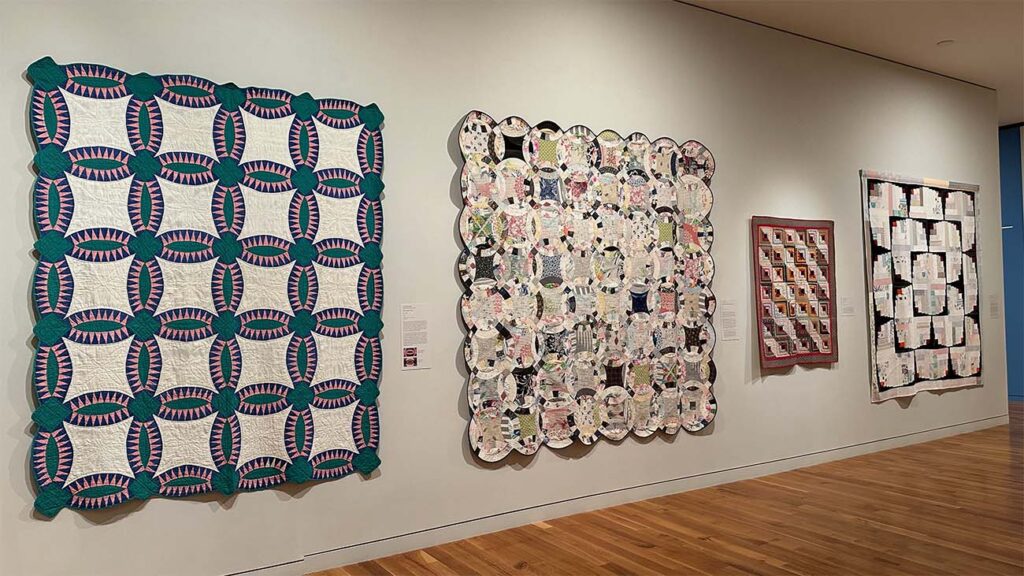
Creating a Space that Tells a Story
When I walk into any museum exhibit, I expect guidance from the flow created by how the curator places the artwork and the story told by the text displayed as you move from room to room. We all know thousands of quilts are worthy of display in a museum, and all of the individual quilts in this exhibit fit into this category. Still, I was curious to know why the curator chose each quilt for this particular exhibit.
“Did they just Google the word quilt?” was my initial impression as I moved through the space. I found the layout jarring as I moved from room to room, and I can only imagine the experience of a non-quilter could be even worse. While there were small moments of flow, those were quickly interrupted by a complete change in direction.
Moments of Flow
The CMA holds a sizable collection of quilts, and I am always excited to see these pieces brought out for display. The overall exhibit included a mix of quilts from the permanent collection and contemporary artists.
Several sections of the exhibit included a historic quilt paired with a contemporary reinterpretation that plays with the design or theme of the original piece.
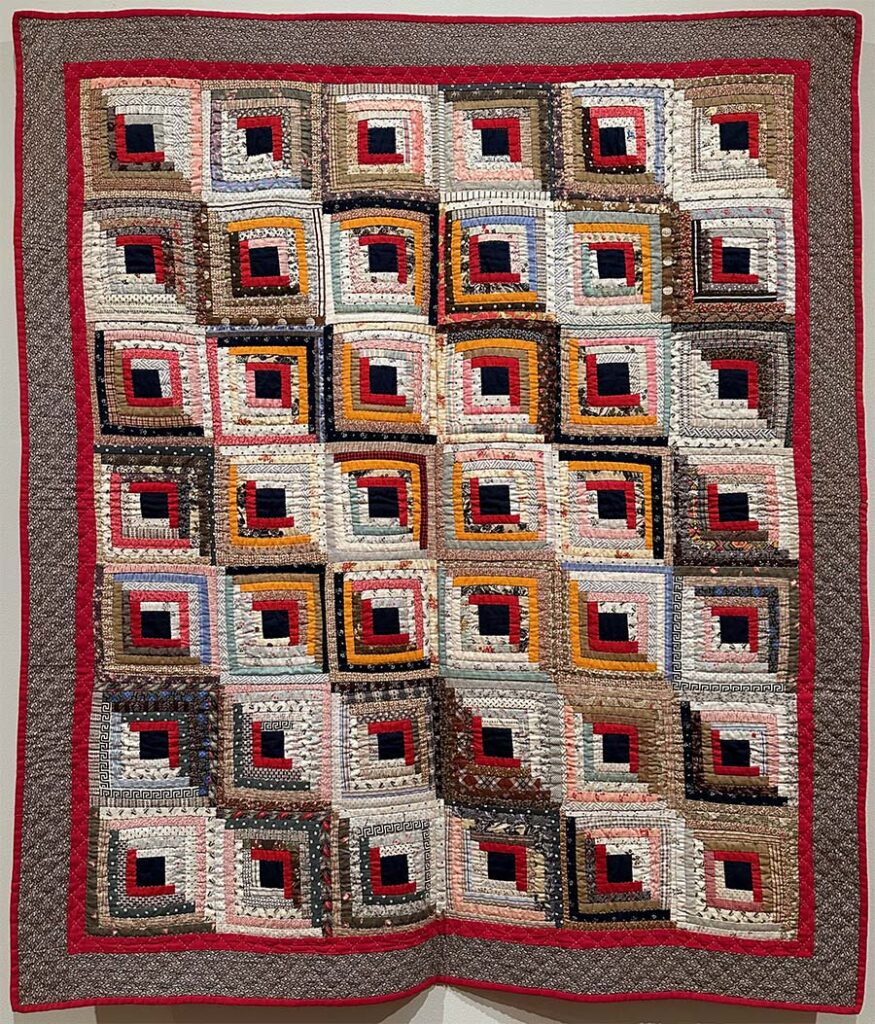
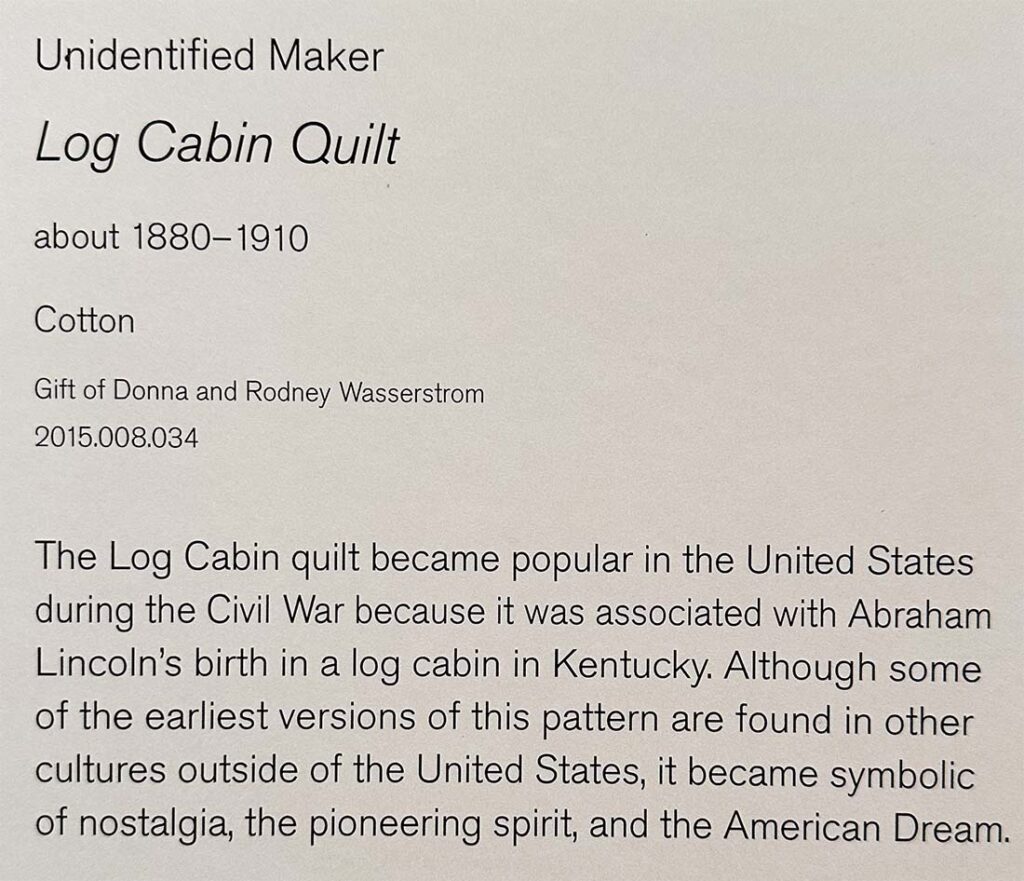
For instance, the curators arranged three Log Cabin quilts near each other in the exhibit’s second room. Two of these quilts are larger pieces, one from approximately 1880-1910 and the other a contemporary piece attributed to artist Luke Haynes.
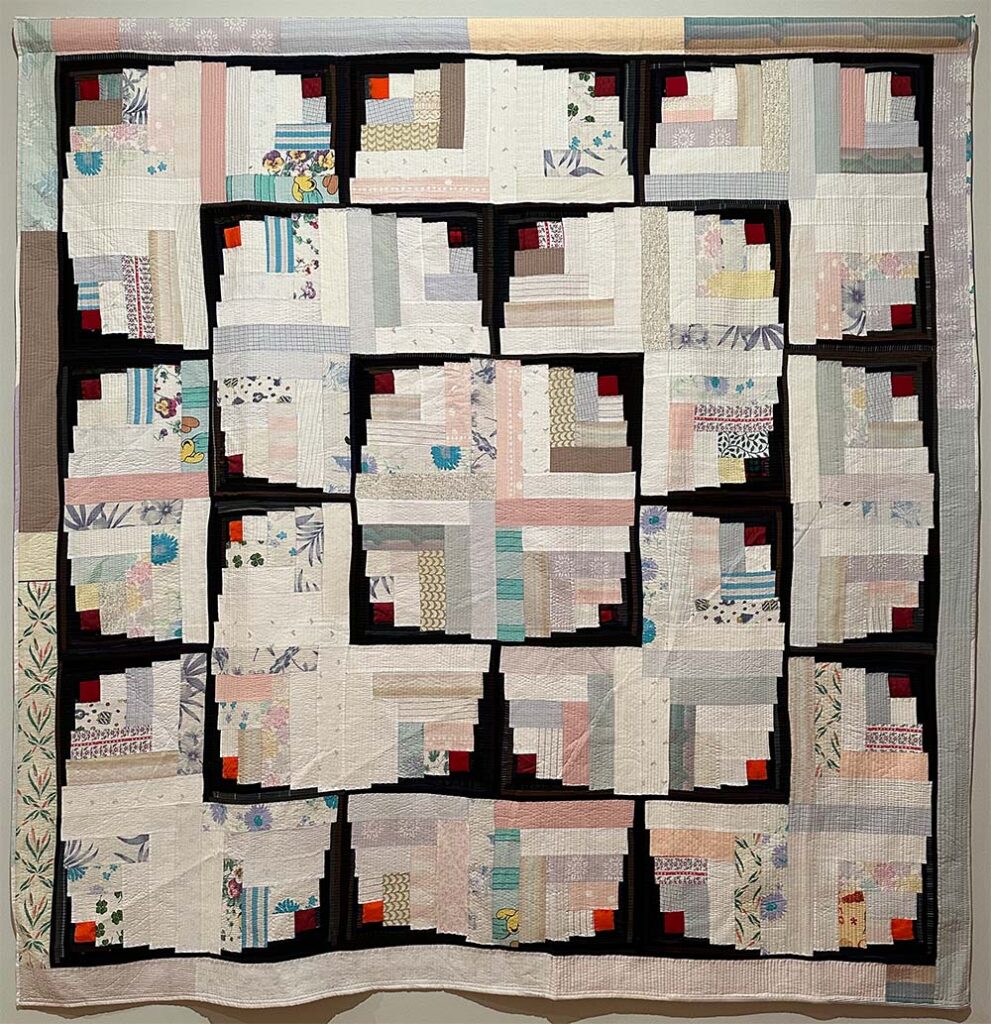
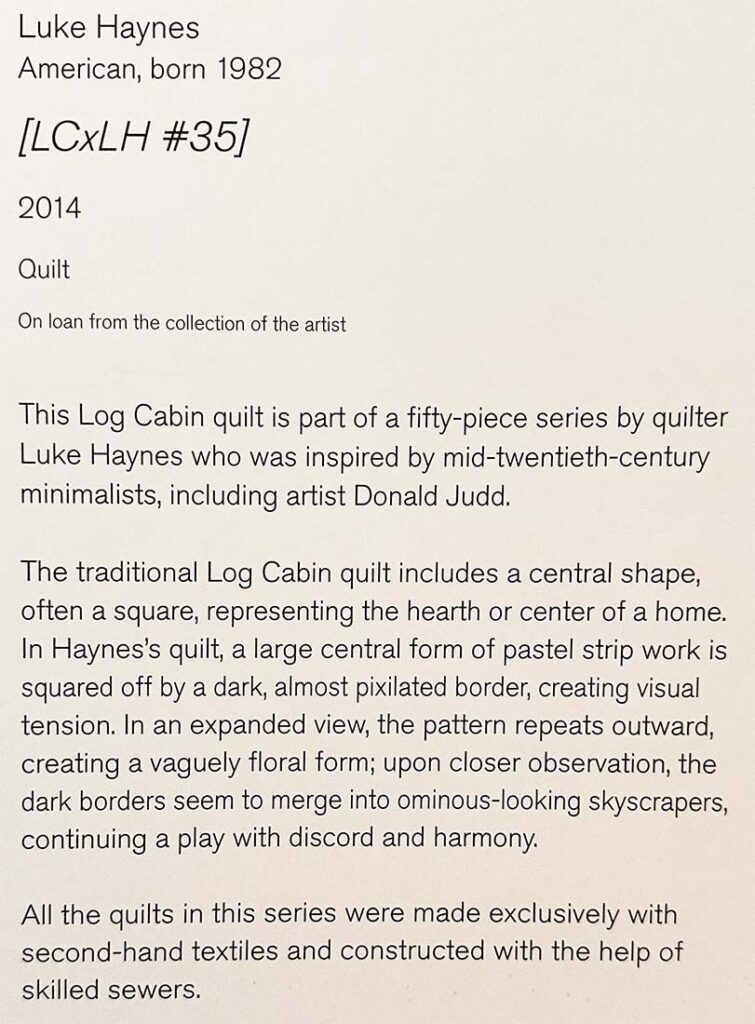
A small-scale log cabin quilt made around the same time as the other historic Log Cabin was placed in a glass case nearby.
The text accompanying these quilts points out how the makers use the same motif in pieces created more than a century apart and encourages viewers to look for similarities and differences.
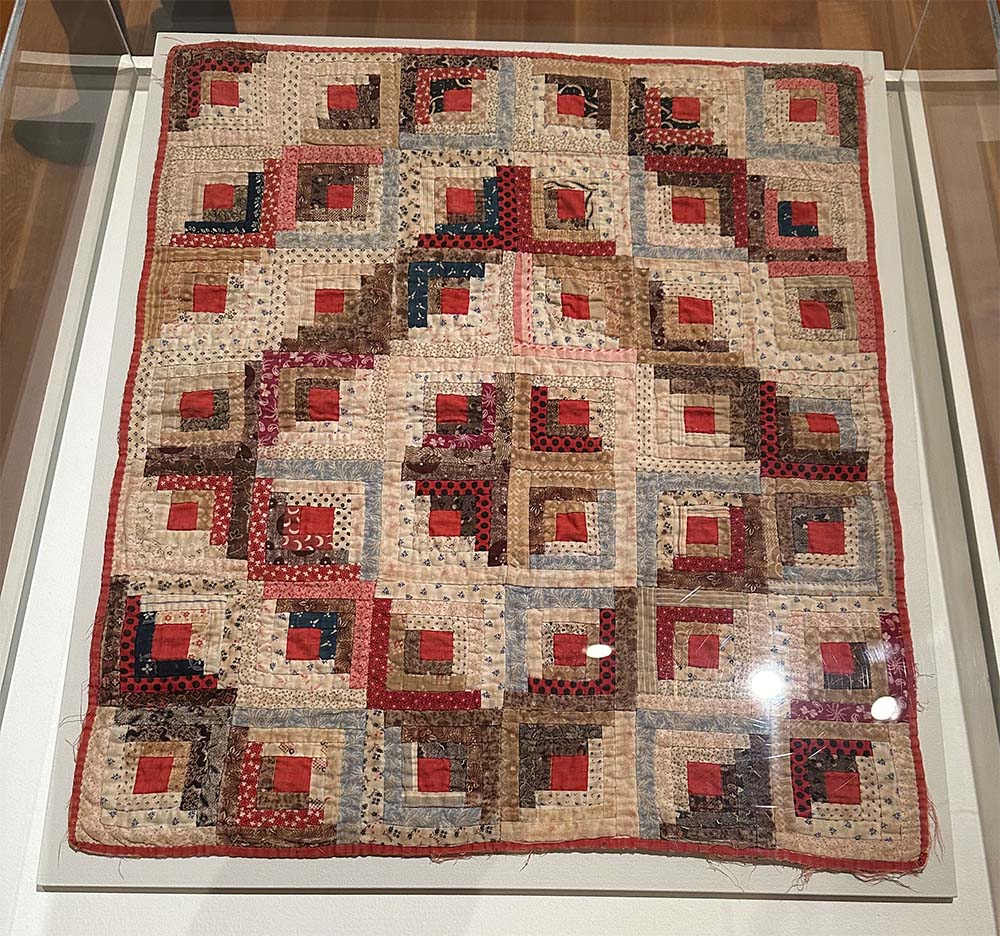

And then some parts didn’t flow.
When I attend a quilt show, I frequently expect loose associations within categories such as pieced quilts, appliqué, or hand-quilted quilts.
My expectations for exhibitions of quilts in a museum setting are different because the audience encompasses a broader range of people, many of whom may have never had more than a casual encounter with a quilt. Through an exhibit like this, these individuals can consider quilts as art for what may be the first time. If someone is used to experiencing art as mainly painting or sculpture, guidance within the exhibit is critical to their overall experience and understanding of the work on display.
Patterns and Techniques
The exhibit’s second room held several of my favorite pieces and was themed “Patterns and Techniques.” Upon entering the space, a large section of wall text greeted you, explaining several traditional techniques, including block quilting, appliqué quilting, strip piecing, and foundation piecing. The text passage also listed a few contemporary techniques in the exhibit, although I do not understand why improvisational piecing is not considered a traditional technique. I would classify several non-contemporary quilts in this exhibit as improvisational.
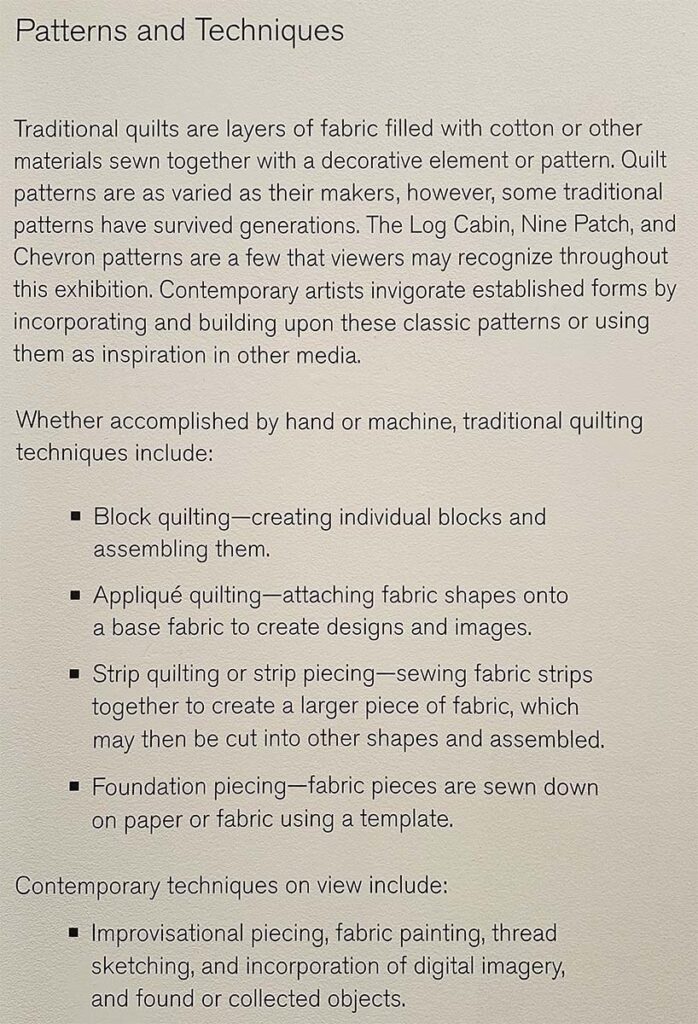
What confused me was not so much the text on the wall but how the labeling of each quilt failed to connect back to this general information. For instance, the text lists block quilting as a traditional technique, but as you move through the exhibit, this isn’t echoed in the text for individual quilts. In all of the descriptions of Log Cabin quilts shown earlier, the term “square” is used instead of the term “block,” which I think would make it challenging for a non-quilter approaching quilts as art for perhaps the first time to understand the methods outlined.
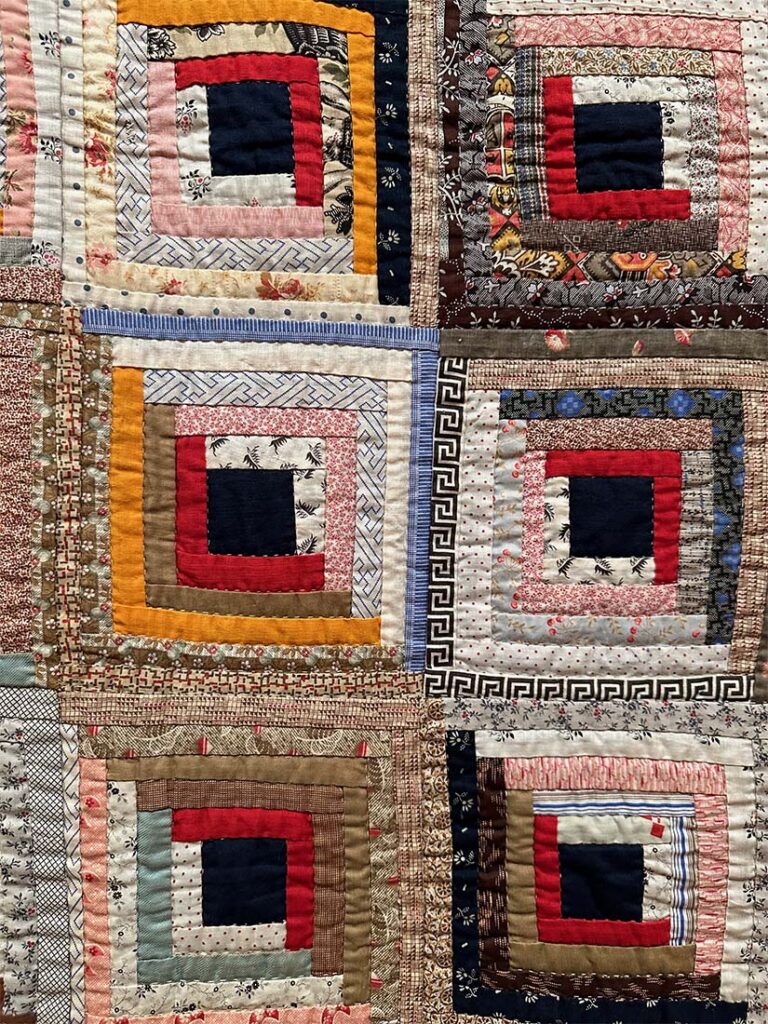
Quilt 20 (Zora) by Sanford Biggers, which I shared in the post, 5 Quilts You’ll Love From the CMA Exhibition, included appliqué elements but instead listed them in the quilt description as strip work, which confuses their definition of strip piecing, and “a small patch with a medallion stitched onto the surface.” The fabric strips and the medallion are applied using a form of appliqué, but the writer does not reference the technique in the description.
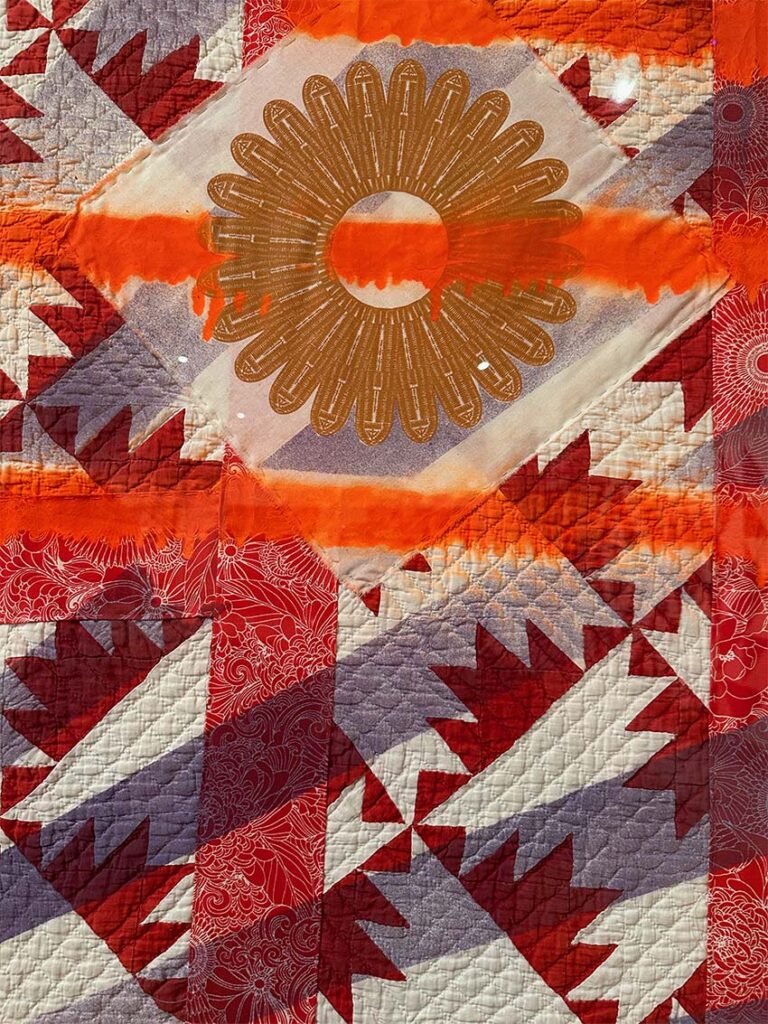
What Makes a Quilt?
Did you notice that the mentioned techniques only discussed how the quilt top, and perhaps the back, is constructed?
A non-quilter visiting the exhibit would benefit from knowing about the three layers typically used to create a quilt, preferably with a visual aid, and explaining how those layers are held together using ties, hand quilting, or machine quilting.
While the CMA frequently incorporates technology into its exhibits to encourage a greater understanding of the art, there were no videos of quilters doing any part of the process. The exhibit even mentioned technology, but no visual connections to how quilters are currently using this technology.
A Missed Opportunity to Draw Connections
While the exhibit rarely mentioned quilting stitches and didn’t include Wholecloth quilting as a significant technique, there were several examples of this method in the quilts and quilted items on display. An entire room was dedicated to quilted clothing, which seemed out of place because of the need for more context between it and the rooms of quilts surrounding it.
Wholecloth quilting was a primary feature of most garments and accessories included in the exhibit. I wish the curators had taken this opportunity to tie together the intricate whole cloth petticoats of the 1800s and the sharp whole cloth jackets of the late 1900a to a historic whole cloth quilt and the stunning contemporary painted and printed whole cloth quilts of Dr. Carolyn L. Mazloomi.
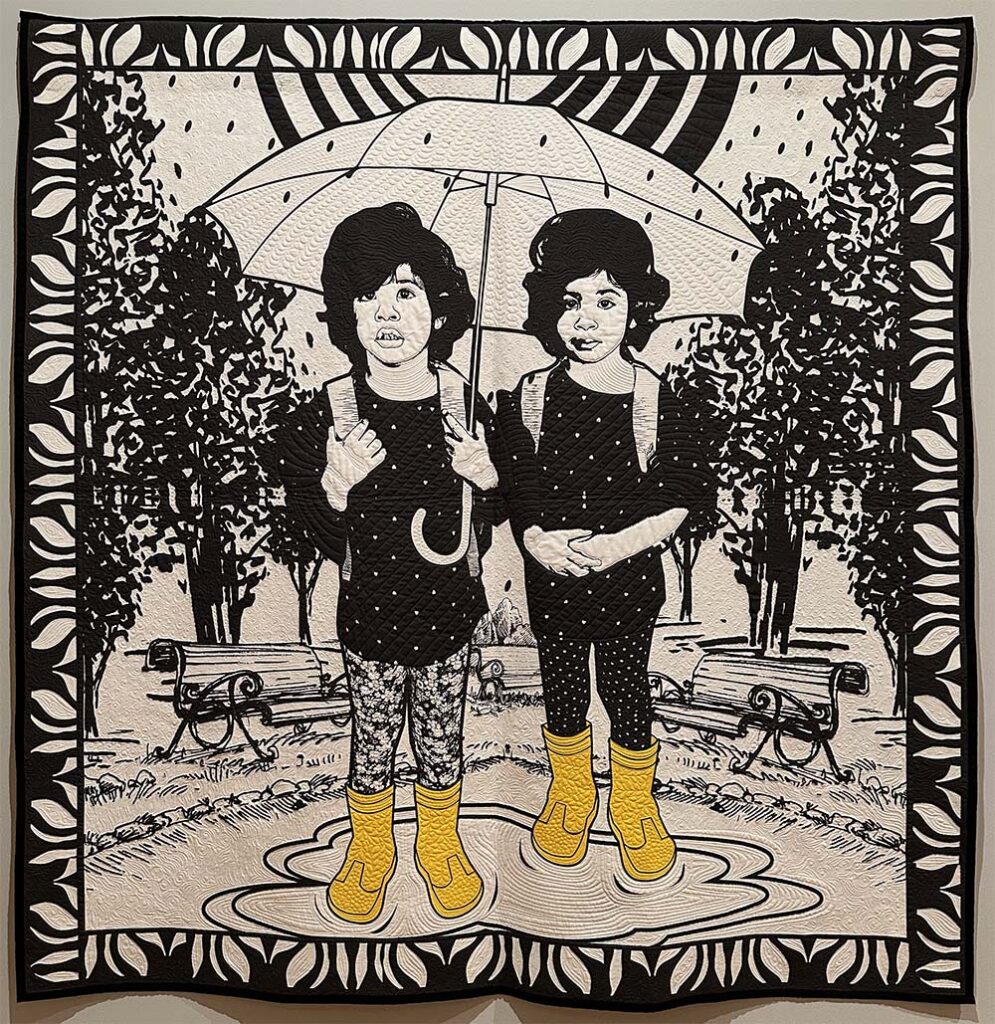
Past, Present, and Future
Quilting a Future is not the first quilt exhibit at The Columbus Museum of Art, although it is the largest one I have seen. In 2017, I visited Botanical Wonders, a small but highly cohesive exhibit. The museum has an extensive collection of quilts, so I am eager to see how future exhibits will compare to what we saw in this one!

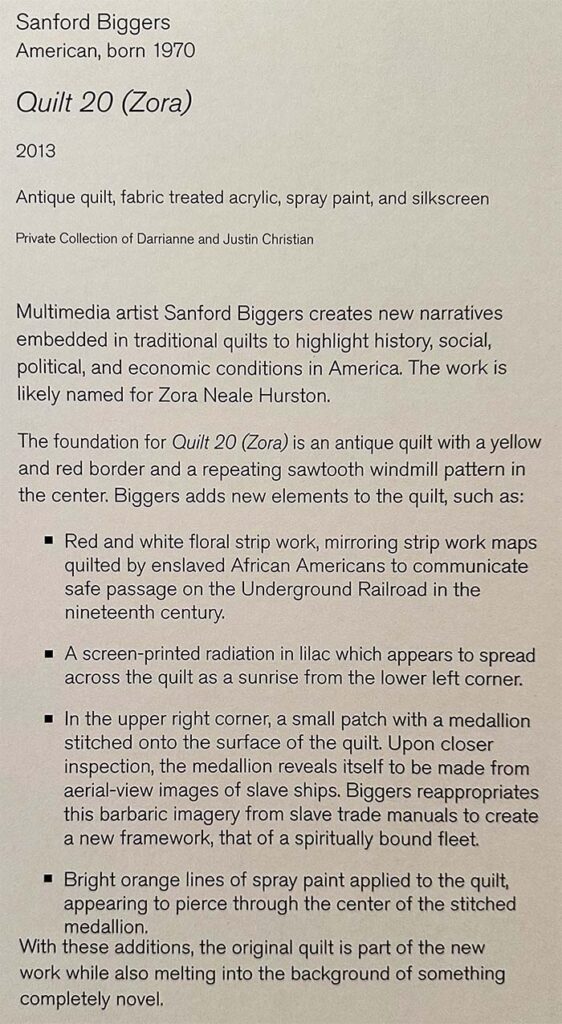
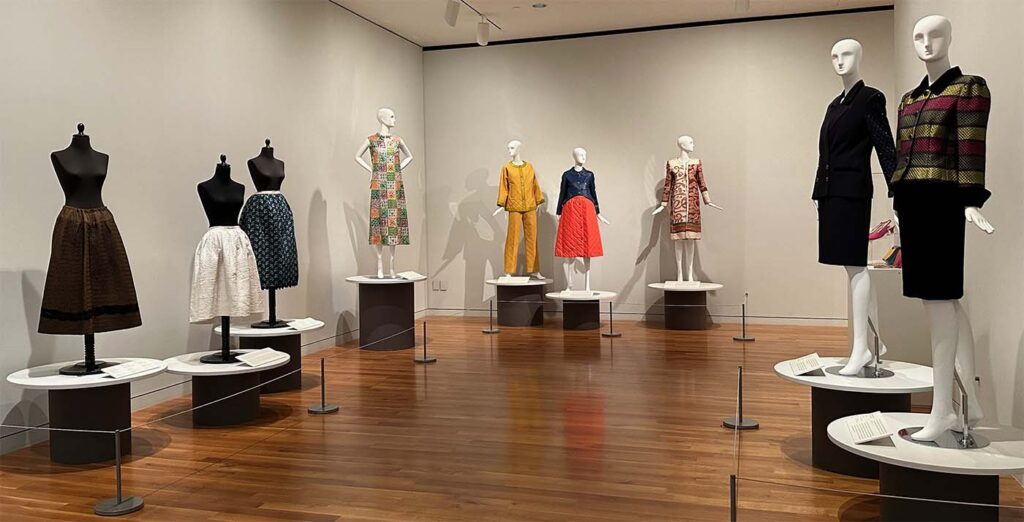

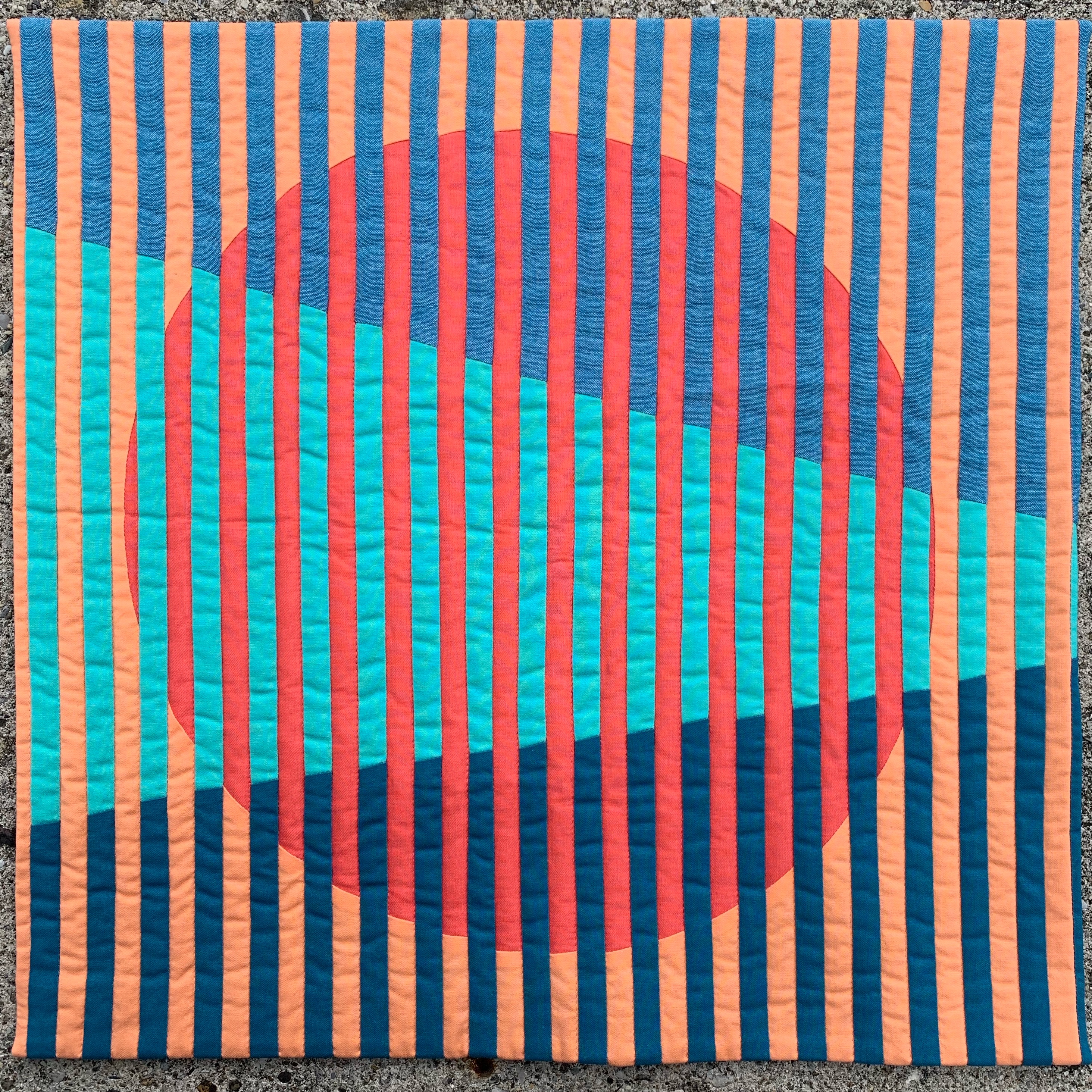
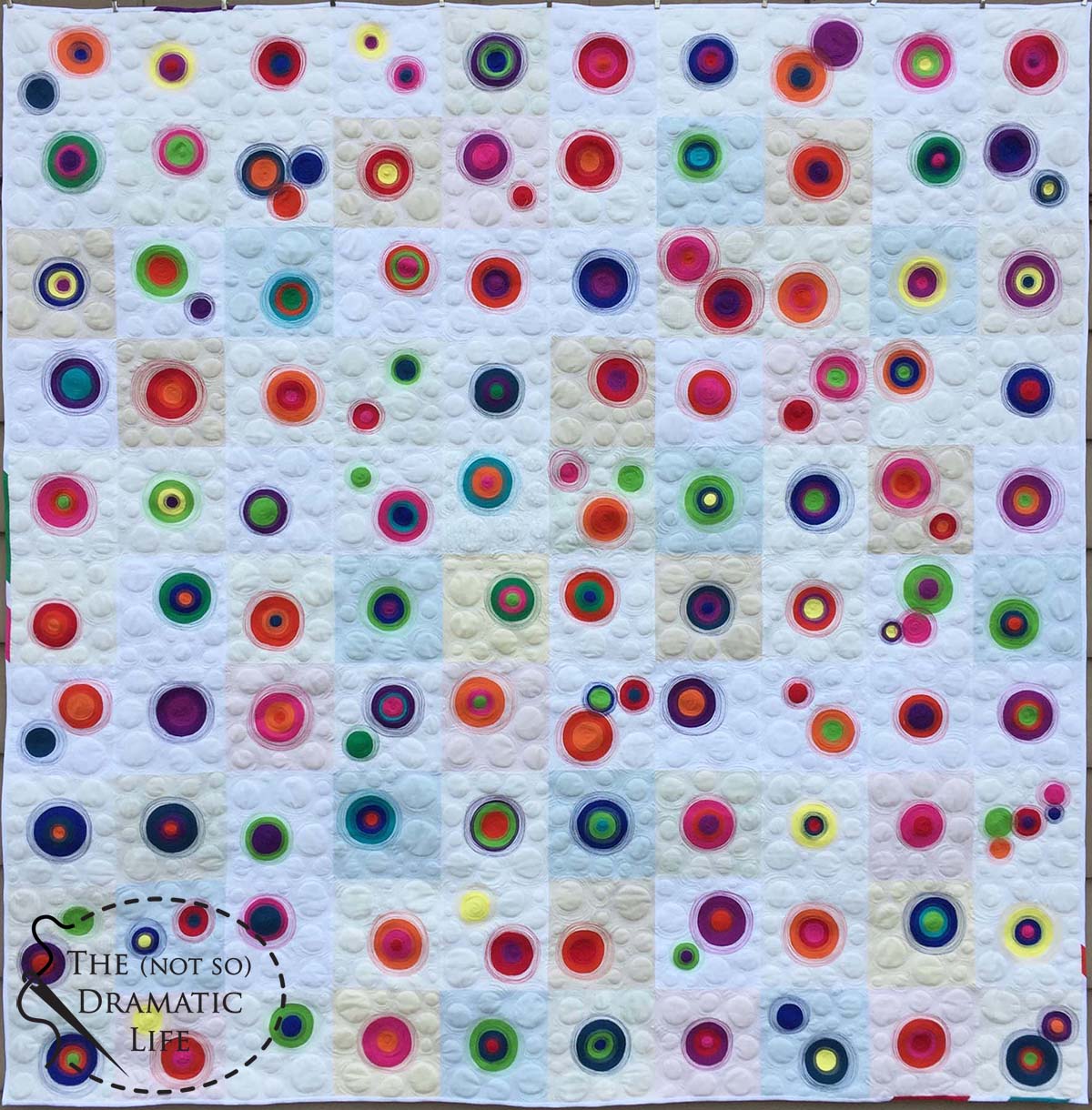
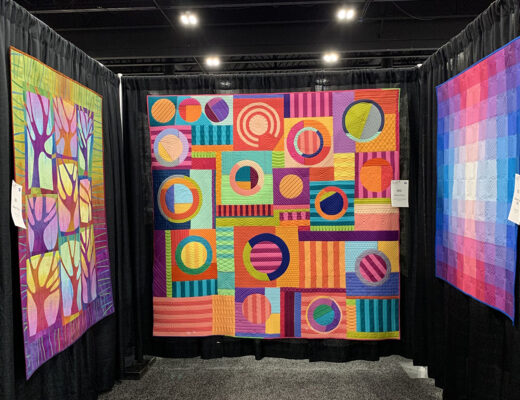
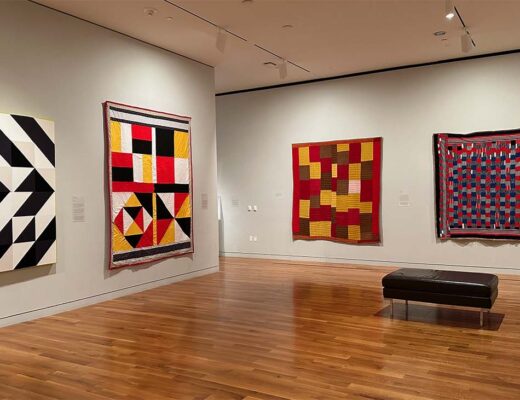
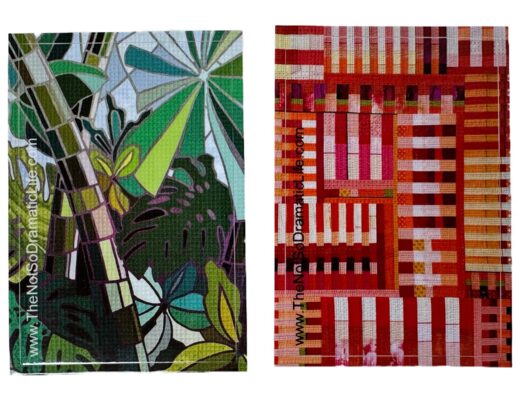
1 Comment
Kathie
February 9, 2024 at 7:53 amI get it….when you read a thesis statement, you expect the following text to explain that statement. In the case of this exhibit, the curator failed to continue the flow of that thesis statement in the body of the work. I would suggest that you offer your services to the museum to give a quilter’s insight into the work for any future exhibits. I would have loved to have seen the exhibit, but I really appreciate that you brought it to us through your blog.